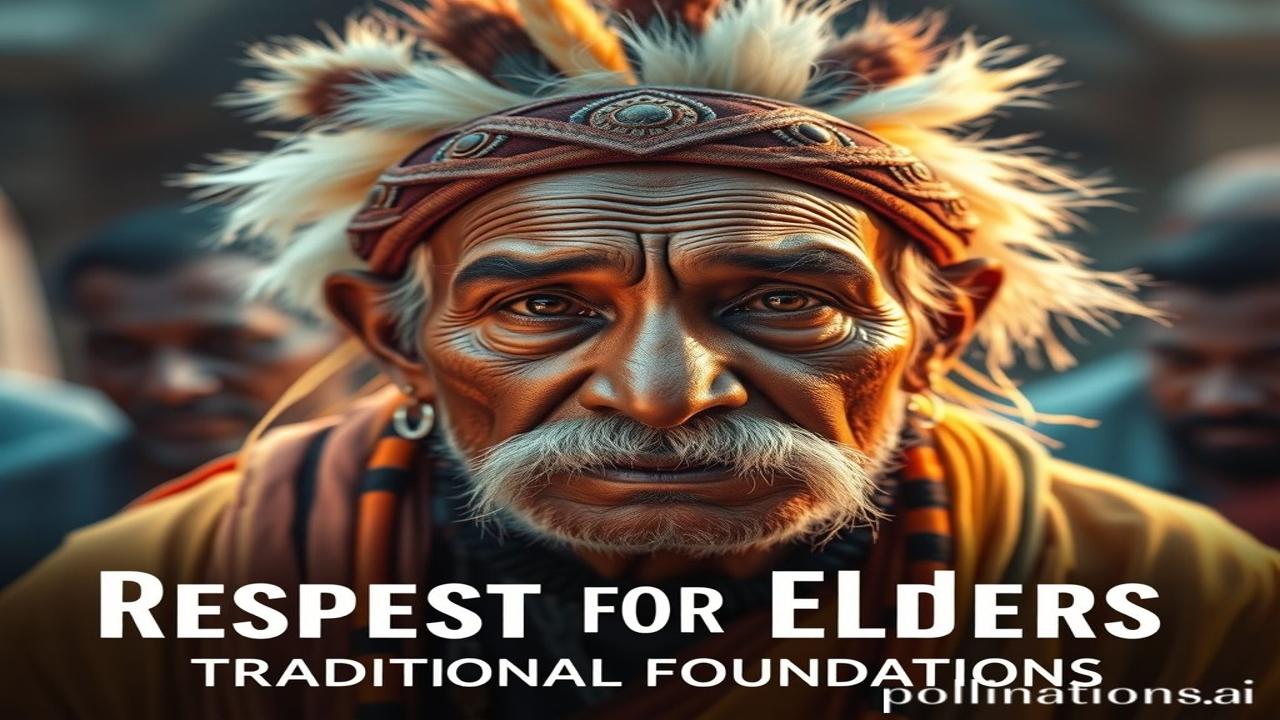Waqt Ki Dhool Mein Dabi Aastha: Respect for Elders
Kabhi socha hai, woh peedhiyan jo humse pehle guzar gayi, unhone apne dil mein kya chhupa rakha tha? Woh raaste jahan unke kadam pade, unme kaisi aawaz thi? Imagine, a soft breeze carrying the fragrance of sandalwood and ghee lamps, whispers of ancient wisdom echoing through the havelis of our ancestors. Aaj, hum chalte hain uss raaste par, ek aisi parampara ko samjhne ke liye jo Bharat ki ruh mein basi hai: Respect for Elders.
Itihaas Ki Pustakon Se: Foundation of Adar in India
Respect for elders, ya ‘bade-buzurgon ka aadar’, isn’t just a nice thing to do; it’s a fundamental pillar of Bharatiya culture, a tradition woven into the very fabric of our society for millennia. This tradition isn’t just about age; it’s about experience, wisdom, and the accumulated knowledge passed down through generations. From the Vedic age (1500-500 BCE), the Grihastha (householder) stage of life emphasized respecting and caring for their parents. The Manusmriti, an ancient legal text, explicitly outlines the duties of children towards their parents, emphasizing obedience and providing for their needs in old age. But yaar, this isn’t some dry historical fact. It’s about the core value of appreciating and learning from those who came before us. It’s a dhrohar, a legacy we inherit.
Par kyun hai itna important?
Think about it: in a pre-industrial, largely agrarian society, elders held the keys to survival. They knew the land, the crops, the weather patterns. They were the historians, the healers, the keepers of traditions. Respecting them wasn’t just polite; it was practical. The information they held meant survival for the younger generations. This practical necessity transformed into a deep-seated cultural value.
Zameeni Sach: Jeevan Ki Dhara
Picture this: A small village in Rajasthan. It’s dusk, the air thick with the scent of woodsmoke and spices. Maaji, her face etched with the stories of a hundred summers, sits on a charpai in the courtyard. Her grandchildren gather around, listening intently as she narrates tales of brave warriors and clever foxes, weaving moral lessons into every story. Each wrinkle on her face is a map of their family history. She is the keeper of their culture, their traditions, their values.
“Beta, kabhi apne roothe mat bhulna. Jiss ped ke jadd nahi hoti, woh gir jata hai,” she advises her grandson, reminding him to stay connected to his roots.
Meanwhile, in a royal court in the Mughal era, even Emperors showed respect to their elder advisors. They understood that experience held weight, and the counsel of wise men was invaluable in navigating the complexities of ruling an empire. चाहे वो अकबर हों या शिवाजी, aadar was central to their decisions.
Dharohar Aur Pehchan: Echoes in Modern India
Today, in the bustling cities of India, the traditional ways are often challenged. Par, the respect for elders still persists, though often in evolved forms.
- Rituals & Festivals: From touching elders’ feet during festivals like Diwali to seeking their blessings before important events, these practices are still alive and kicking.
- Family Structures: Though nuclear families are becoming more common, the joint family system, where elders play a central role, still exists in many parts of India.
- Language: The use of respectful terms like ‘aap’ instead of ‘tum’ and addressing elders with honorific titles like ‘pitaji’ and ‘mataji’ are common indicators of respect.
- Values: Even in a globalized world, Indian parents often instill in their children the importance of respecting elders and taking care of them in their old age.
Bharatiyata lies in this unbroken chain of passing on values from one generation to the next.
Mazedar Tathya: Myth-Buster Time!
Log sochte hain ki respect for elders ka matlab hai unki har baat maanna. Lekin asli sach yeh hai that respect doesn’t mean blind obedience. It means valuing their experience, listening to their wisdom, and making informed decisions after considering their perspectives. It’s about thoughtful consideration, not robotic compliance. Samajh mein aaya?
Drishya Aur Bhavnayein: Sensorial Tapestry
Close your eyes and imagine: The scent of burning incense mingling with the aroma of freshly cooked roti. The cool, smooth texture of marble beneath your bare feet as you touch the feet of your grandfather. The resonant sound of his voice as he narrates a story from the Ramayana, his words carrying the weight of centuries. The warmth of his hand on your head as he bestows his blessings. Yeh hai woh ehsaas, jo hamein hamari jadon se jode rakhta hai.
Antim Vichar Ya Uddharan: A Final Reflection
In the rush of modern life, let’s not forget the wisdom and experience of our elders. They are the living libraries of our history, the keepers of our traditions, the anchors of our values.
“वृद्धजनों का सम्मान, संस्कृति का आधार।”
Respect for elders is the foundation of our culture. Let us cherish and uphold this tradition, for it is the essence of Bharatiyata.
